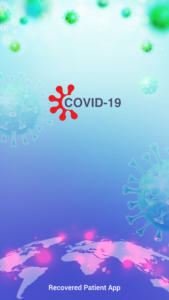AirSensa’s COVID-19 recovered patient app
There is a worrying link between small increases in air pollution and mortality rates of COVID-19. Harvard University’s TH Chan School of Public Health found that a small increase of 1 microgram per cubic metre in fine particulate matter (known as PM2.5) leads to an increase of 15% in COVID-19 deaths.
This is just one of the first pieces of research on the impact of Coronavirus and our longer-term health that we expect to see in the coming months. Emerging data from around the world show that around half of recovered COVID-19 patients suffer some degree of scarring on their lungs. This is likely to make them more vulnerable to environmental conditions, including air pollution and rapid temperature gradients (such as happens with urban heat islands). There is also considerable evidence that the impact of COVID-19 is disproportionately impacting some ethnic groups.
We have developed the AirSensa Recovered COVID-19 Patient App using our proprietary analytics platform STORRM, to support the long term understanding of COVID-19 on health. By producing an app to help track the continuing and post-recovery status of COVID-19 sufferers – and particularly how environmental conditions relate – we will be creating data which will be of significant interest to health authorities, insurers, and researchers.
It is important to note that this will not be a contact tracing app but instead focused on the long-term health and wellbeing of those impacted by the disease.
AirSensa Post Recovery App

We are creating a free-to-user app for patients to self-report their daily health status, and also if and when they notice any symptoms such as shortness of breath, coughing fits, or other issues.
Collecting such data will achieve a number of objectives:
- Track whether symptoms reoccur or reinfections are happening
- Provide real-time insight into upcoming potential challenges for local healthcare facilities
- Give researchers the ability over time to relate such symptoms to environmental factors such as air pollution, and understand whether (and which) environmental conditions exacerbate or cause increased respiratory issues
The app could also be used to disseminate information directly to sufferers from designated public health authorities and/or healthcare providers.
Content specification
We have assembled a group of medical experts led by Professor Pali Hungin, former president of the British Medical Association in the UK, to contribute to the app content. Over time, we will continue to add medical and academic contributors from around the world to that group to work with us on future developments, which we expect to happen quickly and regularly over the coming months.
The app is highly flexible and capable of deploying any question set we wish, allowing us to develop the content – and indeed entirely new topics – over time.
Targeted users
We are happy for anybody that believes they’ve had COVID-19 to download and use the app, but it is primarily aimed at those that have been hospitalised for the disease and subsequently discharged.
Relationship to air pollution
AirSensa technology generates hyperlocal data on air pollution in real-time, monitoring conditions at many more measurement points than current statutory monitoring stations. We created the technology because pollution which impacts people’s health (particularly the more vulnerable in our communities) is highly localised, and current monitoring is not fit for purpose.
COVID-19 is adding a new cohort of vulnerable people to existing groups, all of whom will have access to hotspot alerts based on our hyperlocal real-time data as it becomes available.
If you would like to know more or receive updates, please go to: https://www.airsensa.com/the-solution/individual/#post-recovery-app
The demonstrator app (Android version) will be available to download during w/c 1 June; please register for updates to be informed when the app can be downloaded.
Jonathan Steel
CEO, AirSensa



